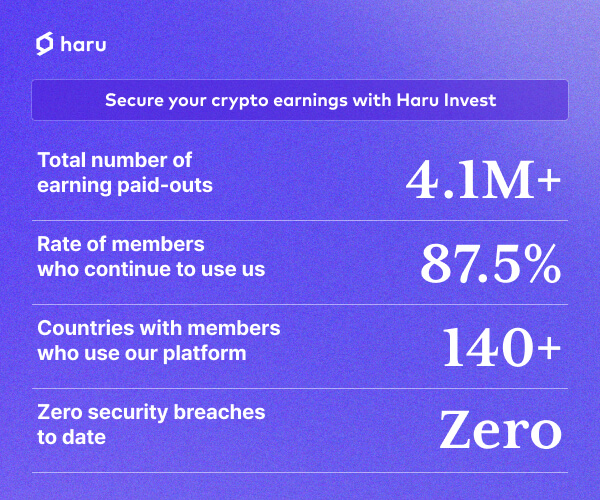Crypto doesn’t need the FTX’s of the world


Did Sam Bankman-Fried mix the funds on purpose? Never mind. For cryptocurrencies to reach their full potential, the industry cannot rely on entities like his FTX and other centralized exchanges.
If better implementations of blockchain technology were really unlocked, there would be no need for a centralized authority. Users should be able to interact directly with the blockchain itself, and those blockchains should be able to interact with other blockchains. Look at the turmoil the industry has to deal with now. And that’s just the beginning!
Last weekend, Sam Bankman-Fried tweeted that he would testify before the US Congress when he had time to consider the causes of FTX’s demise. He wrote in response to Democratic Rep. Maxine Waters, who chairs the U.S. House Financial Services Committee after inviting him to a hearing scheduled to investigate his FTX on Dec. 13.
Since the demise of FTX, Bankman-Fried has denied fraudulent intent while admitting “many mistakes.” Some have suggested it was part of a clever ruse to win back public opinion and limit the damage. Anyway, crypto is designed to insulate people from both incompetence and malice.In the original vision of blockchain, someone like Bankman-Fried didn’t have to exist. Here’s how to fix it:
The future of blockchain will be multi-chain
Instead of one specific chain, the user chooses from many chains. All chains are interconnected and can communicate with each other. The industry term for this is interoperability. That is the multi-chain future that the industry should aim for.
Blockchains communicate with each other without the need for a central server. Users will also be able to exchange tokens between chains, potentially reducing demand for centralized exchanges. An interoperable blockchain makes the use of innovative dapps cheaper than Ethereum gas prices.
These blockchains also offer modularity and configuration choices. Users don’t have to develop new smart contracts to deploy their favorite apps, but enjoy a more plug-and-play experience. No longer forced into isolated tech stacks, users can build stacks leveraging the capabilities of multiple blockchains at once. This will be quick and easy. It continues to effortlessly offer all the features we see today, including staking, governance, token issuance, NFTs, and his DeFi using a well-known and secure software development language.
The Blockchain SDK also enables developers to build sovereign blockchain applications without the ongoing costs associated with current blockchain operations. This could eliminate transaction fees caused by network congestion thanks to new scalability.
The blockchain industry is increasingly trapped in systems that become more expensive over time. Instead, the technology should get cheaper over time. Bandwidth should grow with your network. This can be achieved by ensuring that the network supports deploying more nodes, miners, etc. than the current paradigm.
Additionally, users will no longer have to pay transaction fees in specific tokens or cryptocurrencies. For example, Ethereum gas bills can only be paid with her ETH. A user pays a transaction fee with his dapp’s tokens in use. The blockchain may also incorporate one of the central aspects of the Bitcoin blockchain: a hardcoded deflationary mechanism. It would be best for them to do so.
Ethereum Faces Intense Competition From Diverse Blockchains
Ethereum became a blockchain standard without a formal standardization process. As such, it is unlikely that any particular blockchain will have the economic power to quickly flip Ethereum and become a more used blockchain. However, although there are those who object to this, developers create blockchains with higher economic value with the protocol. Open to blockchain experiences.
Scalability is still an issue for blockchain today. For example, it can take minutes or even hours to complete an Ethereum transaction. Today, complex financial products on Ethereum are built with smart contracts, but in the future, smart contracts will essentially be blockchains themselves.
What will the future blockchain look like?
Persistent blockchain technology offers user-friendly design and interoperability for simple communication between blockchains, all for free. Interoperability has become synonymous with scalability and is enabled by common communication standards. Any blockchain can communicate with any other blockchain and contribute to the design of the protocol.
Scalability is achieved by replicating the blockchain. This helps alleviate congestion. Apps are split into multiple application-specific blockchains. Inter-chain token transfers allow these multiple chains to continue her one network.
For the promised blockchain use cases such as DeFi, NFTs, and DAOs to reach their full potential, we cannot rely on centralized institutions like the world’s FTX. users will no longer have to worry about whether Bankman Freed of the World has intentionally or unknowingly mixed up customer funds. Similar to Bitcoin developer Satoshi Nakamoto’s vision, blockchain will be truly trustless.
Guest post by Kadan Stadelmann on Komodo Blockchain
Kadan Stadelmann is a blockchain developer, operational security expert, and chief technology officer of the Komodo Platform. His experience ranges from working in operational security for the government sector, to launching technology startups, to application development and cryptography. Kadan started his journey into blockchain his technology in 2011 and in 2016 he joined the Komodo team.
More information→




